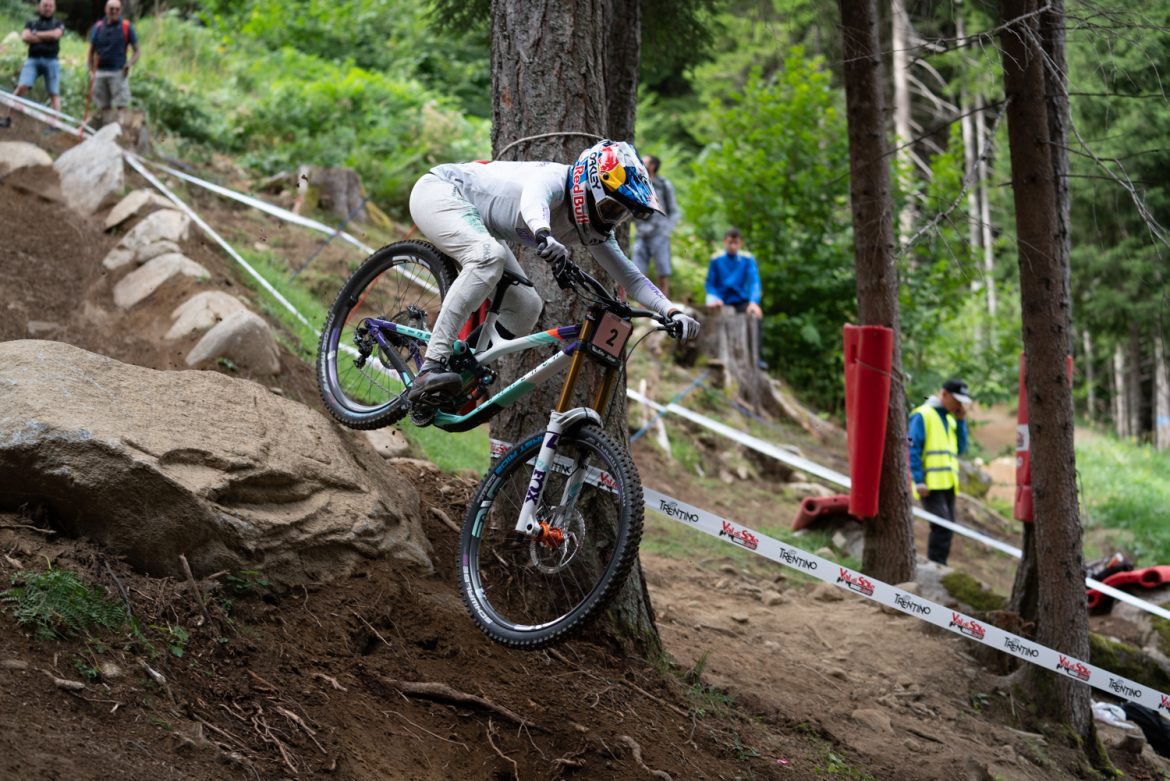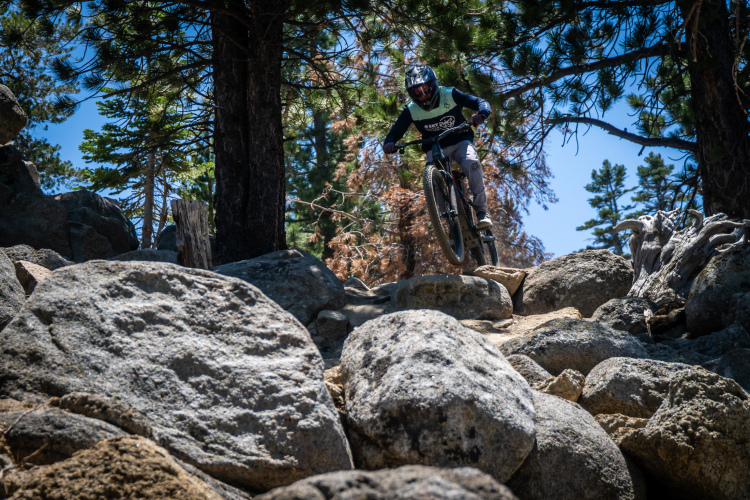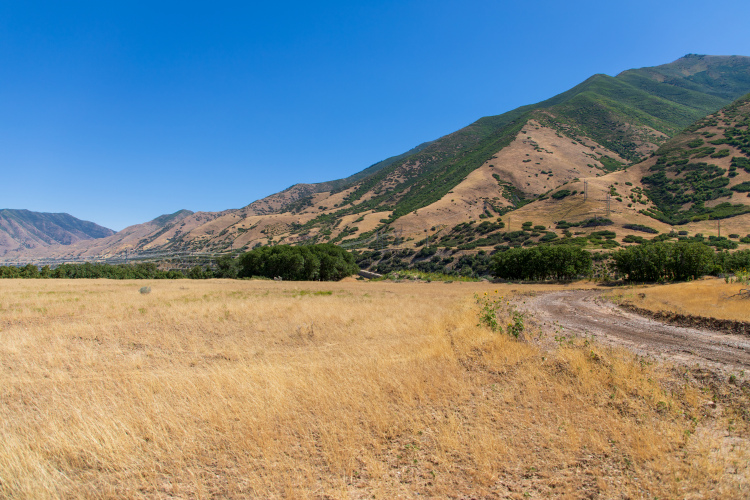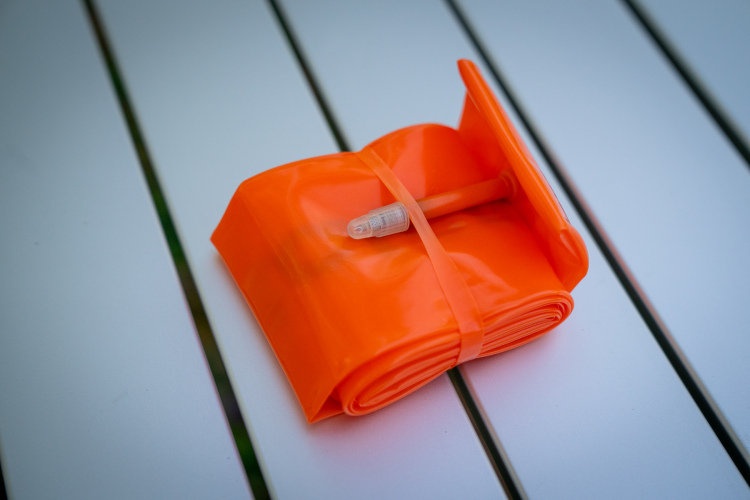Mountain bike racing teams are oftentimes fairly separate from the companies that sponsor them, owned and run by a passionate person, and funded by a few generous sponsors. In the case of Commencal, all of the pieces come together in a closer family unit. Max Commencal is enthusiastic about the athletes he works with, and you will often see him hugging riders at the finish line of World Cup downhill races.
Max also runs the Commencal bike company and has to manage the time and finances that make both entities work. We recently had a chance to ask him some questions about team building and the value he sees in that two-wheeled family.

Max’s responses were translated from French and edited for clarity. As such they may include small differences in interpretation.
What initially inspired you to start a frame brand and the related race teams?
Certainly the coincidences of life. I am not a “cyclist.” I love beautiful objects, being good at what I do, bringing people together, shaking up habits, combining technology and aesthetics. And I love the business, especially when it allows travel and discovery. Cycling and especially MTB has allowed me to do all of this!
Racing fans are often curious about the return-on-investment of racing teams for bike brands. Do you feel that the Commencal factory and sponsored teams benefit to the brand are proportionate to the amount of money and energy that’s put into them? Have you found helpful ways to measure or consider this?
It’s very difficult to measure, and I don’t know what to say about the ROI. What I see is that our business is going very well, and this involvement in the competition side is definitely one of the parameters of this success. But it’s not the only one.
Regardless of the numbers, is running a race team more of a passion and community project, a financial/marketing one, or something else?
It’s clearly a passion. Even more than that, it’s a family and a world in which we feel good. It’s a real pleasure to meet up on these legendary tracks around the world. Financially, we can afford it, so we do it.

You sponsor some of the fastest female riders in the world while other brands maintain all-male squads. Is this intentional?
I’ve always hated the “macho” side of cycling in general. Between them, the guys often think too much about showing off their muscles, and I always found that a bit strange. Girls also love competing but they have a bit of a different philosophy to the rest of the cycling world. Much more oriented towards sharing, friendship, and fun. That’s why I don’t only think of a team made up of just men. That has always been the case, and always will be.
You also work with a number of junior and U23 riders. Do you see something unique about the current group of young athletes? Who stands out?
With the juniors, I think of it as similar to a football training and development center. This is the future and it’s exciting to believe in young riders, to take them to the top steps of World Cup podiums. We have always worked like this. The majority of the titles that we have achieved have been with riders who we have accompanied since the beginning of their journey. “Buying” a rider when they’re on top is not really our thing. Now, it is even before junior level that we go out looking for future stars. We’ve been doing this for a few years now and I see other bike brands deciding to take inspiration from this strategy. So much better!
On to that new Commencal DH race bike that’s going so fast. Should DH race teams have race-only bikes/components that are not necessarily fit for the general public, similar to the cars that F1 drivers pilot?
That’s a good question! It’s sure that when we work on team bikes, we don’t care too much if this innovation might one day be available for the general public. What we want is simple; to have the best bike. In the sport of DH, the quality of the bike affects the result. We can directly help riders improve their performances. Subsequently, we are seeing that many of our solutions for race/competition bikes might reoccur on our production bikes. But that’s not the primary goal.
What advantages or disadvantages have you seen with mixed-wheel setups on enduro and DH race bikes?
At the moment, it seems that mixing the wheels is best for gravity-oriented practices. However, it’s to be taken with caution as it may depend on the size of the rider. Secondly, having two different diameter wheels is not enough to make a good bike. Going “mullet” forced us to completely review everything in terms of geometry, kinematics, position on the bike, stiffness, etc. It’s a lot of work! Essentially, it is better to have a good 29/29 than a bad 29/27.
What makes French racers so fast?
There is a DH culture in France that you cannot find everywhere else, although a lot of nations are now making great strides. Winning isn’t all about equipment and training. It is a methodical, almost scientific preparation that leads to being ready on D-day. There are some brilliant people in France, intelligent riders, who have understood the subtleties in order to win. But hey, as I said, many other nations are also there, and they are winning too. This is a very positive move forward, and an essential one.

What’s your philosophy behind using aluminum for all Commencal frames?
As you know, I don’t like carbon because of its production; usually made in China and in dire conditions. Then once you have a mold for a frame there is nothing more you can do. With aluminum (in addition to being easily recyclable) you can make as many prototypes as you want, whether for geometry, kinematics, etc. We make dozens of them a year, for riders or just to test. And then, because an aluminum frame made within ‘rules of the art,’ is so beautiful. Aluminum, as we see it, is a level of requirement that goes far beyond a simple production bike. The precise design evokes performance and exclusivity.
How has the perception of e-bikes changed over the past few years, and where do you see the electric genre going?
Under no circumstances do I want to pitch electric bikes against the others. Personally, I love e-bikes. I’m a bit lazy, not young, and not in Olympic form. But with my Power, I’m riding again and with everyone I want to, and I really enjoy it. I love everything about my e-bike! I think more and more people will turn to them and working on these bikes is also a passion. It takes us to another world, closer to motorbikes and cars, with different technology and integration. It’s a real pleasure.
Is there an element of cycling that needs to change, or that you feel will change in the near future?
Developments in terms of technology progress as engineers create. And competition is often the starting point but above all, it’s at the mentality level that changes must start. I love the Canadian lifestyle in places like BC and Quebec. “Van-life” style. You go away with family and friends, all with your bikes, to discover a different region or resort. You make and share memories, have adventures, and have fun playing sports outdoors. Simple. Ski resorts must also lean more towards the bike world and other domains should think about sharing their riches through cycling. It’s coming, but it’s too slow.

What’s your favorite place to ride outside Andorra, and why?
I haven’t had much time to myself this year. Shame, but I have still been lucky to discover places that put in tremendous effort in relation to the world of mountain bikes. I’m thinking of Verbier, Lenzerheide, Val d’Isère, and Reunion Island. I love that mix of ski lifts, e-bike routes, and not too difficult descents. I have had unforgettable moments with my friends, my colleagues, and my family. And that’s just awesome!
What is your personal favorite bike for a fun day on the trail with friends, and why?
No hesitation, my META POWER AXS. I want to take it wherever I go. I can do anything with it and it’s one of the only things that really relaxes me, takes my mind off things. I’m not biased or saying that to advertise it, or because it’s my job. Actually, I really like to take people out who are new to the sport. I think I’m a good instructor for that.
What’s something most folks in the bike industry don’t know about you?
Oh, I don’t know. Maybe that even though you have to make money in a business to keep it independent, free, and innovative, money is not my primary motivation. Above all, I want to make an impression by bringing happiness and joy to people. I want to make people dream and entertain them with our competitive results, with our videos which are meant to be works of art. To unite a group of people who enjoy working together and building the world of tomorrow. A respectful world with a lot of “peace and love.”













1 Comments
Oct 19, 2021